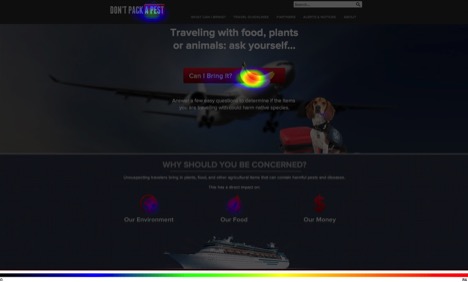 This 3-page fact sheet is the third in a series on integrating critical thinking into Extension programming. It introduces the concept of critical thinking style and describes the two styles of critical thinking. Written by Alexa J. Lamm, and published by the UF Department of Agricultural Education and Communication, April 2015.
This 3-page fact sheet is the third in a series on integrating critical thinking into Extension programming. It introduces the concept of critical thinking style and describes the two styles of critical thinking. Written by Alexa J. Lamm, and published by the UF Department of Agricultural Education and Communication, April 2015.
http://edis.ifas.ufl.edu/wc208
Tag: Agricultural Education and Communication Department
Introduction to Social Network Research: General Introduction and Major Terminology
 Social networks play an important role in the functioning of society and have an important effect on the actions of an individual or organization. It is very important for Extension educators to understand the networks of their clientele in order to perform better and develop more impactful Extension programming for their target audiences. This 5-page fact provides a brief description of network concepts and the terminology used in network studies, so that Extension educators may be more comfortable interpreting and using the results of SNA research to improve the efficiency and productivity of Extension organizations. Written by Anil Kumar Chaudhary and Laura A. Warner, and published by the UF Department of Agricultural Education and Communication, February 2015.
Social networks play an important role in the functioning of society and have an important effect on the actions of an individual or organization. It is very important for Extension educators to understand the networks of their clientele in order to perform better and develop more impactful Extension programming for their target audiences. This 5-page fact provides a brief description of network concepts and the terminology used in network studies, so that Extension educators may be more comfortable interpreting and using the results of SNA research to improve the efficiency and productivity of Extension organizations. Written by Anil Kumar Chaudhary and Laura A. Warner, and published by the UF Department of Agricultural Education and Communication, February 2015.
http://edis.ifas.ufl.edu/wc195
Introduction to Social Network Research: Application of Social Network Analysis in Extension
 Viewed from a network perspective, we are all part of a network of relationships that is interwoven like a fishing net, providing both opportunities for and constraints on our behavior. Social network analysis (SNA) is a new approach to defining and describing society and its organizations and to assessing the impact of organizational structures. This 4-page fact sheet introduces Extension educators to possible ways to apply SNA in their work to plan and evaluate programs in a more efficient way. Written by Anil Kumar Chaudhary and Laura A. Warner, and published by the UF Department of Agricultural Education and Communication, February 2015.
Viewed from a network perspective, we are all part of a network of relationships that is interwoven like a fishing net, providing both opportunities for and constraints on our behavior. Social network analysis (SNA) is a new approach to defining and describing society and its organizations and to assessing the impact of organizational structures. This 4-page fact sheet introduces Extension educators to possible ways to apply SNA in their work to plan and evaluate programs in a more efficient way. Written by Anil Kumar Chaudhary and Laura A. Warner, and published by the UF Department of Agricultural Education and Communication, February 2015.
http://edis.ifas.ufl.edu/wc196
Using Heat Maps to Determine the Usability of Extension Communication Materials
 This heat map from a website usability test shows that more people click on the banana image than anywhere else on the computer screen, followed by the button at the top of the screenshot. This tool allows Extension faculty to determine the ease of respondent use of the communication material. This 6-page fact sheet explains how to use heat maps and how to develop heat map questions in Qualtrics. Written by Laura M. Gorham, Shuyang Qu, Ricky Telg, and Alexa Lamm, and published by the UF Department of Agricultural Education and Communication, February 2015.
This heat map from a website usability test shows that more people click on the banana image than anywhere else on the computer screen, followed by the button at the top of the screenshot. This tool allows Extension faculty to determine the ease of respondent use of the communication material. This 6-page fact sheet explains how to use heat maps and how to develop heat map questions in Qualtrics. Written by Laura M. Gorham, Shuyang Qu, Ricky Telg, and Alexa Lamm, and published by the UF Department of Agricultural Education and Communication, February 2015.
http://edis.ifas.ufl.edu/wc198
Conducting Interviews for News Stories
 In order to write a good news story for print, television, or radio, you have to conduct interviews with the people who have the information you need. An interview is the process of asking good questions so you can get good answers for your news story. This 3-page fact sheet provides some tips to follow as you conduct a news story interview. Written by Ricky Telg, and published by the UF Department of Agricultural Education and Communication, January 2015. (Photo: VStock/Thinkstock.com)
In order to write a good news story for print, television, or radio, you have to conduct interviews with the people who have the information you need. An interview is the process of asking good questions so you can get good answers for your news story. This 3-page fact sheet provides some tips to follow as you conduct a news story interview. Written by Ricky Telg, and published by the UF Department of Agricultural Education and Communication, January 2015. (Photo: VStock/Thinkstock.com)
http://edis.ifas.ufl.edu/wc194
News Writing for Television and Radio
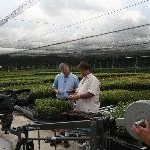 Creating a television or radio story is more than hitting “record” on a video camera or audio recorder. You have to learn the process of writing an effective television and radio news story first. This 4-page fact sheet was written by Ricky Telg, and published by the UF Department of Agricultural Education and Communication, January 2015.
Creating a television or radio story is more than hitting “record” on a video camera or audio recorder. You have to learn the process of writing an effective television and radio news story first. This 4-page fact sheet was written by Ricky Telg, and published by the UF Department of Agricultural Education and Communication, January 2015.
http://edis.ifas.ufl.edu/wc193
Grammar and Punctuation
 Any news story should be as free of grammar and punctuation errors as possible. Grammar is a system of rules that defines the use of the language. Most of the grammar and punctuation rules you have learned in school will be the same when using Associated Press Style, but there are some differences. This 4-page fact sheet covers some common grammatical and punctuation issues for journalists. Written by Ricky Telg, and published by the UF Department of Agricultural Education and Communication, January 2015. (Photo: iStock/Thinkstock)
Any news story should be as free of grammar and punctuation errors as possible. Grammar is a system of rules that defines the use of the language. Most of the grammar and punctuation rules you have learned in school will be the same when using Associated Press Style, but there are some differences. This 4-page fact sheet covers some common grammatical and punctuation issues for journalists. Written by Ricky Telg, and published by the UF Department of Agricultural Education and Communication, January 2015. (Photo: iStock/Thinkstock)
http://edis.ifas.ufl.edu/wc192
News Writing for Print
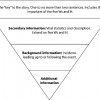 A good print news story will contain the following components: inverted pyramid structure, five Ws and H, leads, impersonal reporting, news writing techniques, quotations and attributions, Associated Press Style, and proper grammar and punctuation. This 5-page fact sheet was written by Ricky Telg, and published by the UF Department of Agricultural Education and Communication, January 2015.
A good print news story will contain the following components: inverted pyramid structure, five Ws and H, leads, impersonal reporting, news writing techniques, quotations and attributions, Associated Press Style, and proper grammar and punctuation. This 5-page fact sheet was written by Ricky Telg, and published by the UF Department of Agricultural Education and Communication, January 2015.
http://edis.ifas.ufl.edu/wc191
News Media Writing
 Knowing how to write in a news media style is important not only for an organization’s reporters, but also for its members. This 2-page fact sheet provides an overview of news writing for print, television, and radio to help you better communicate news about what is going on in your organization. Written by Ricky Telg, and published by the UF Department of Agricultural Education and Communication, January 2015.
Knowing how to write in a news media style is important not only for an organization’s reporters, but also for its members. This 2-page fact sheet provides an overview of news writing for print, television, and radio to help you better communicate news about what is going on in your organization. Written by Ricky Telg, and published by the UF Department of Agricultural Education and Communication, January 2015.
http://edis.ifas.ufl.edu/wc190
The Savvy Survey #8: Pilot Testing and Pre-Testing Questionnaires
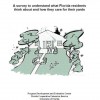 It is a good practice to pre-test a questionnaire after the initial design and formatting are completed. Based on studies conducted by researchers, pre-testing can be implemented using various methods. A number of possible pre-testing methods are described in this 6-page fact sheet was written by Anil Kumar Chaudhary and Glenn D. Israel, and published by the UF Department of Agricultural Education and Communication, December 2014.
It is a good practice to pre-test a questionnaire after the initial design and formatting are completed. Based on studies conducted by researchers, pre-testing can be implemented using various methods. A number of possible pre-testing methods are described in this 6-page fact sheet was written by Anil Kumar Chaudhary and Glenn D. Israel, and published by the UF Department of Agricultural Education and Communication, December 2014.
http://edis.ifas.ufl.edu/pd072
How Problems Gain Speed and Become Contentious Issues Through Agenda Setting
 A significant number of problems, like poverty, crime, and lack of resources, face people in the world today. This 4-page fact sheet discusses how a problem draws political attention through agenda setting and becomes a public issue, discusses the role the media plays in agenda setting, and provides a brief commentary on the influence of interest groups on public issues. Written by Courtney T. Owens and Alexa J. Lamm, and published by the UF Department of Agricultural Education and Communication, December 2014. (Photo: iStock/Thinkstock)
A significant number of problems, like poverty, crime, and lack of resources, face people in the world today. This 4-page fact sheet discusses how a problem draws political attention through agenda setting and becomes a public issue, discusses the role the media plays in agenda setting, and provides a brief commentary on the influence of interest groups on public issues. Written by Courtney T. Owens and Alexa J. Lamm, and published by the UF Department of Agricultural Education and Communication, December 2014. (Photo: iStock/Thinkstock)
http://edis.ifas.ufl.edu/wc177
Improving Extension Program Development Using Audience Segmentation
 Developing an impactful Extension program depends on acquiring a deep understanding of the audience’s specific needs and preferences. Audience segmentation allows an agent to address the variability among Extension clientele, in order to deliver the programming and messages that are most meaningful to an audience/clientele segment. This 5-page fact sheet was written by Paul Monaghan, Laura Warner, Ricky Telg and Tracy Irani, and published by the UF Department of Agricultural Education and Communication, November 2014. (UF/IFAS photo Marisol Amador)
Developing an impactful Extension program depends on acquiring a deep understanding of the audience’s specific needs and preferences. Audience segmentation allows an agent to address the variability among Extension clientele, in order to deliver the programming and messages that are most meaningful to an audience/clientele segment. This 5-page fact sheet was written by Paul Monaghan, Laura Warner, Ricky Telg and Tracy Irani, and published by the UF Department of Agricultural Education and Communication, November 2014. (UF/IFAS photo Marisol Amador)
http://edis.ifas.ufl.edu/wc188
Building Impactful Extension Programs by Understanding How People Change
 Extension is reported to be one of the world’s most successful change agencies, and the ability to encourage behavior change remains critical to its success. This 7-page fact sheet describes an approach to understanding how Extension audiences move through the process of change as a means of delivering meaningful programming at the most appropriate level. Written by Laura A. Warner, Sebastian Galindo-Gonzalez, and Michael S. Gutter, and published by the UF Department of Agricultural Education and Communication, December 2014. (Photo:iStock/Thinkstock.com)
Extension is reported to be one of the world’s most successful change agencies, and the ability to encourage behavior change remains critical to its success. This 7-page fact sheet describes an approach to understanding how Extension audiences move through the process of change as a means of delivering meaningful programming at the most appropriate level. Written by Laura A. Warner, Sebastian Galindo-Gonzalez, and Michael S. Gutter, and published by the UF Department of Agricultural Education and Communication, December 2014. (Photo:iStock/Thinkstock.com)
http://edis.ifas.ufl.edu/wc189
Talking Local series
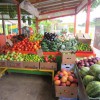 Extension agents can assist Florida farmers and ranchers in the labeling, sale, and promotion of locally-produced products. This six part series of 3- to 5-page fact sheets provides information about Florida consumers’ perceptions of local food to Extension faculty who are interested in local food programming or who work with local food clientele. Written by Joy N. Rumble and Caroline G. Roper, and published by the UF Department of Agricultural Education and Communication, September 2014.
Extension agents can assist Florida farmers and ranchers in the labeling, sale, and promotion of locally-produced products. This six part series of 3- to 5-page fact sheets provides information about Florida consumers’ perceptions of local food to Extension faculty who are interested in local food programming or who work with local food clientele. Written by Joy N. Rumble and Caroline G. Roper, and published by the UF Department of Agricultural Education and Communication, September 2014.
http://edis.ifas.ufl.edu/topic_series_talking_local
In this series:
- Florida Consumer Definitions of Local Food
- Florida Consumers’ Local Food Purchasing Behaviors
- Florida Consumers’ Reasons for Purchasing Local Food
- Florida Consumers’ Food Buying Decisions when Given Local Food Information
- Florida Consumers’ Flexibility with the Term “Local”
- Florida Consumers’ Fresh from Florida Perceptions
Floridians' Perceptions of GMOs: GMOs and Florida Citrus
 Worldwide and in Florida, food-related issues such as food safety, food security, and use of new food technologies continue to be top concerns. Among the food-related issues are concerns about consuming the products from transgenic plants, often referred to as “GMOs.” This 4-page fact sheet is intended to help Extension faculty understand public perceptions regarding the use of genetic engineering to combat citrus greening. Extension faculty can use this understanding of public perceptions as they develop and deliver programming for clientele. Written by Nicole M. W. Dodds, Laura M. Gorham, and Joy N. Rumble, and published by the UF Department of Agricultural Education and Communication, October 2014.
Worldwide and in Florida, food-related issues such as food safety, food security, and use of new food technologies continue to be top concerns. Among the food-related issues are concerns about consuming the products from transgenic plants, often referred to as “GMOs.” This 4-page fact sheet is intended to help Extension faculty understand public perceptions regarding the use of genetic engineering to combat citrus greening. Extension faculty can use this understanding of public perceptions as they develop and deliver programming for clientele. Written by Nicole M. W. Dodds, Laura M. Gorham, and Joy N. Rumble, and published by the UF Department of Agricultural Education and Communication, October 2014.
http://edis.ifas.ufl.edu/wc182
Using the Delphi Technique to Achieve Consensus: A Tool for Guiding Extension Programs
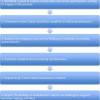 The ability to achieve a group consensus may be critical during specific activities throughout an Extension professional’s career. For example, it may be important to identify an advisory committee’s highest priorities or a group of stakeholders’ most important programmatic needs. The Delphi method has been recognized as a suitable alternative to interviews and formal meetings in certain circumstances. This 6-page fact sheet provides an overview of the Delphi method and suggestions for using this technique to support Extension programming. Written by Laura A. Warner, and published by the UF Department of Agricultural Education and Communication, October 2014.
The ability to achieve a group consensus may be critical during specific activities throughout an Extension professional’s career. For example, it may be important to identify an advisory committee’s highest priorities or a group of stakeholders’ most important programmatic needs. The Delphi method has been recognized as a suitable alternative to interviews and formal meetings in certain circumstances. This 6-page fact sheet provides an overview of the Delphi method and suggestions for using this technique to support Extension programming. Written by Laura A. Warner, and published by the UF Department of Agricultural Education and Communication, October 2014.
http://edis.ifas.ufl.edu/wc183
Emphasizing the Science, Technology, Engineering, and Math (STEM) in Agricultural Extension
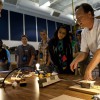 STEM is an acronym for science, technology, engineering, and math. In Extension, our purpose is to share the knowledge or products created through Ag-STEM research and design by universities and government agencies. Finding effective solutions to agricultural issues, especially in urban areas, increasingly involves working with clientele to solve problems jointly. Therefore, emphasizing the connections of STEM to agricultural problems through Ag-Extension programming can help our public audiences comprehend the problem-solving system underlying the content. The goal is to provide public audiences with self-confidence and skills in STEM, preparing them to be more engaged in the problem-solving process for the challenges ahead. This 5-page fact sheet was written by Kathryn A. Stofer, Laura A. Warner, and Steven Arthurs, and published by the UF Department of Agricultural Education and Communication, October 2014. (UF/IFAS photo by Tyler Jones.)
STEM is an acronym for science, technology, engineering, and math. In Extension, our purpose is to share the knowledge or products created through Ag-STEM research and design by universities and government agencies. Finding effective solutions to agricultural issues, especially in urban areas, increasingly involves working with clientele to solve problems jointly. Therefore, emphasizing the connections of STEM to agricultural problems through Ag-Extension programming can help our public audiences comprehend the problem-solving system underlying the content. The goal is to provide public audiences with self-confidence and skills in STEM, preparing them to be more engaged in the problem-solving process for the challenges ahead. This 5-page fact sheet was written by Kathryn A. Stofer, Laura A. Warner, and Steven Arthurs, and published by the UF Department of Agricultural Education and Communication, October 2014. (UF/IFAS photo by Tyler Jones.)
http://edis.ifas.ufl.edu/wc184
Extension and Community Resilience: Improving Community Disaster Preparedness Using Online Resources
 As Extension agents work to improve the quality of life in their communities, they must increase the capacity to respond to disasters, especially in high risk areas (which includes most of coastal Florida). Community Resiliency is a community’s ability to quickly recover from adversity and it can be enhanced through planning and adaptation using easily available online resources. This 4-page fact sheet describes supplemental educational materials that can be added to community resiliency training, offering background information and specific tools for disaster preparation. Written by Emily Ott, Paul Monaghan, and Timothy Fogarty, and published by the UF Department of Agricultural Education and Communication, October 2014. (UF/IFAS photo by Milt Putnam)
As Extension agents work to improve the quality of life in their communities, they must increase the capacity to respond to disasters, especially in high risk areas (which includes most of coastal Florida). Community Resiliency is a community’s ability to quickly recover from adversity and it can be enhanced through planning and adaptation using easily available online resources. This 4-page fact sheet describes supplemental educational materials that can be added to community resiliency training, offering background information and specific tools for disaster preparation. Written by Emily Ott, Paul Monaghan, and Timothy Fogarty, and published by the UF Department of Agricultural Education and Communication, October 2014. (UF/IFAS photo by Milt Putnam)
http://edis.ifas.ufl.edu/wc187
Measuring Community Resilience using Online Toolkits
 When we return to the scene of recent disasters like New Orleans, we find that some communities and neighborhoods are able to recover faster than others, while some never completely recover. Community Resilience is defined as the ability for a community to bounce back from a disaster, adapt to changes, and become more sustainable. The resilience assessment and planning tools reviewed here range from simple, ready-to-print worksheets intended for use by average citizens to comprehensive planning exercises more appropriate for city planners, emergency service providers, and elected officials. Not all of the toolkits will apply to every community. This 6-page fact sheet was written by Paul Monaghan, Emily Ott, and Timothy Fogarty, and published by the UF Department of Agricultural Education and Communication, July 2014. (UF/IFAS photo by Tyler Jones)
When we return to the scene of recent disasters like New Orleans, we find that some communities and neighborhoods are able to recover faster than others, while some never completely recover. Community Resilience is defined as the ability for a community to bounce back from a disaster, adapt to changes, and become more sustainable. The resilience assessment and planning tools reviewed here range from simple, ready-to-print worksheets intended for use by average citizens to comprehensive planning exercises more appropriate for city planners, emergency service providers, and elected officials. Not all of the toolkits will apply to every community. This 6-page fact sheet was written by Paul Monaghan, Emily Ott, and Timothy Fogarty, and published by the UF Department of Agricultural Education and Communication, July 2014. (UF/IFAS photo by Tyler Jones)
http://edis.ifas.ufl.edu/wc172
The Savvy Survey #12: Telephone Surveys
 This publication provides a brief overview of how to develop and conduct a telephone survey to collect data. It assumed that a list of phone numbers, such as program registration lists, is available for conducting program evaluations or assessing needs. When volunteers or staff assist with the survey by interviewing respondents, this data collection method can be economical and effective. Careful attention is needed when developing the questionnaire and supporting materials and when orienting interviewers in order to obtain credible survey data. In the right situation, telephone surveys can be a valuable tool for Extension agents and specialists. This 7-page fact sheet was written by Glenn D. Israel and Jessica L. Gouldthorpe, and published by the UF Department of Agricultural Education and Communication, October 2014.
This publication provides a brief overview of how to develop and conduct a telephone survey to collect data. It assumed that a list of phone numbers, such as program registration lists, is available for conducting program evaluations or assessing needs. When volunteers or staff assist with the survey by interviewing respondents, this data collection method can be economical and effective. Careful attention is needed when developing the questionnaire and supporting materials and when orienting interviewers in order to obtain credible survey data. In the right situation, telephone surveys can be a valuable tool for Extension agents and specialists. This 7-page fact sheet was written by Glenn D. Israel and Jessica L. Gouldthorpe, and published by the UF Department of Agricultural Education and Communication, October 2014.
http://edis.ifas.ufl.edu/pd076
